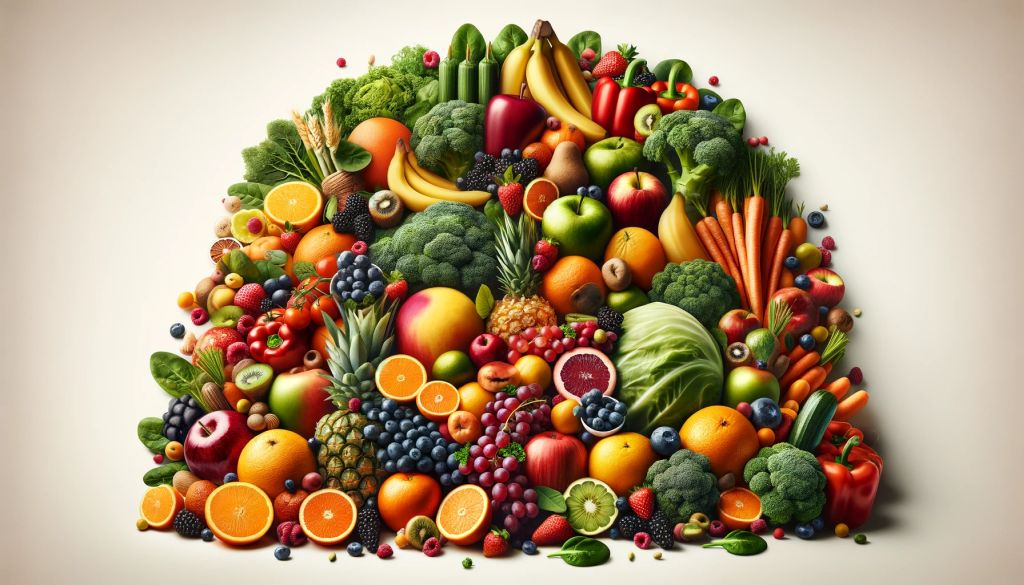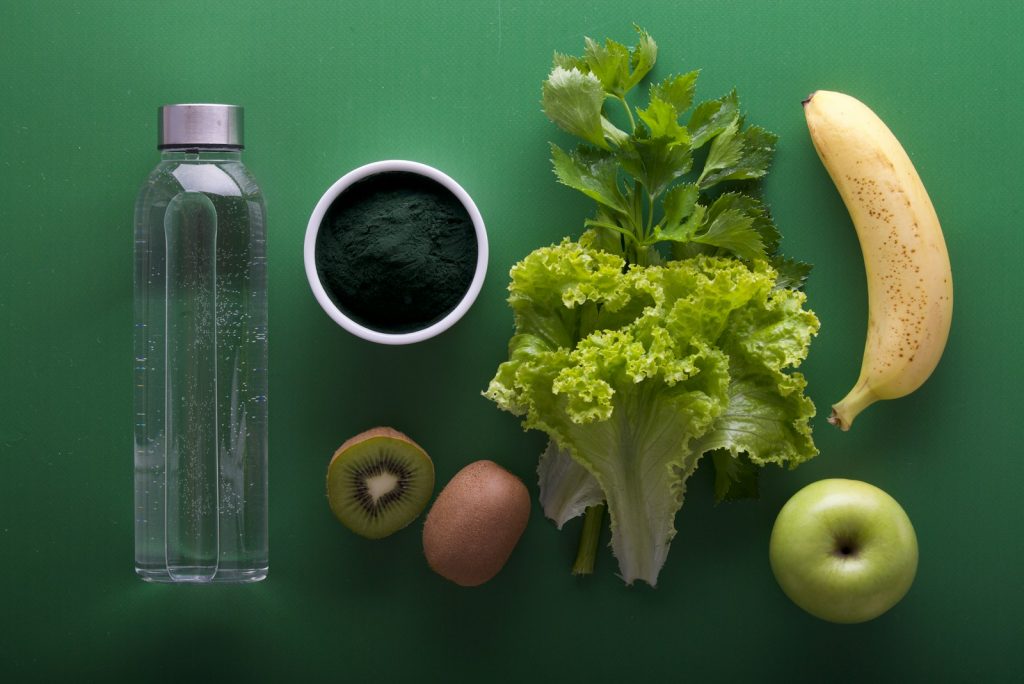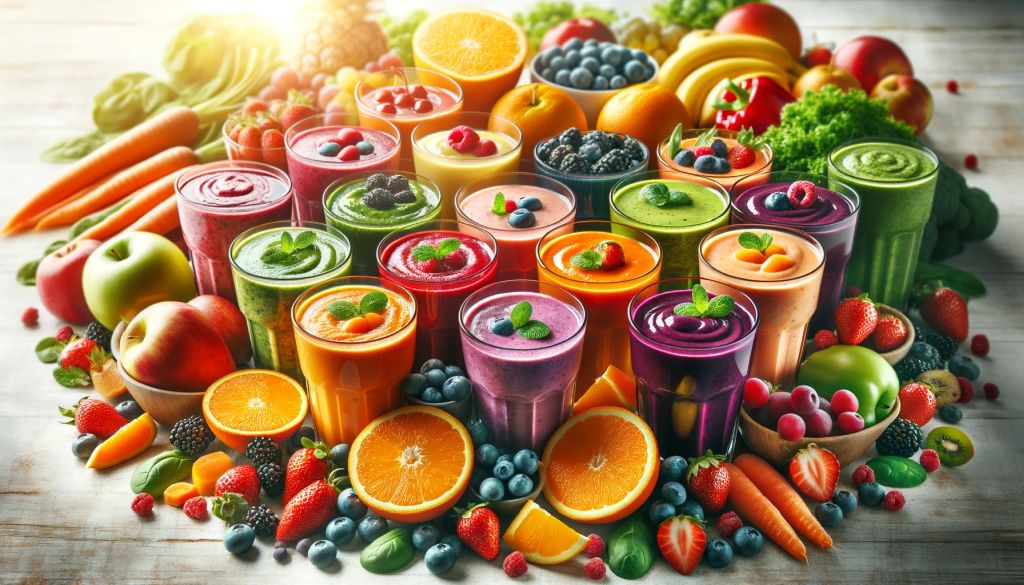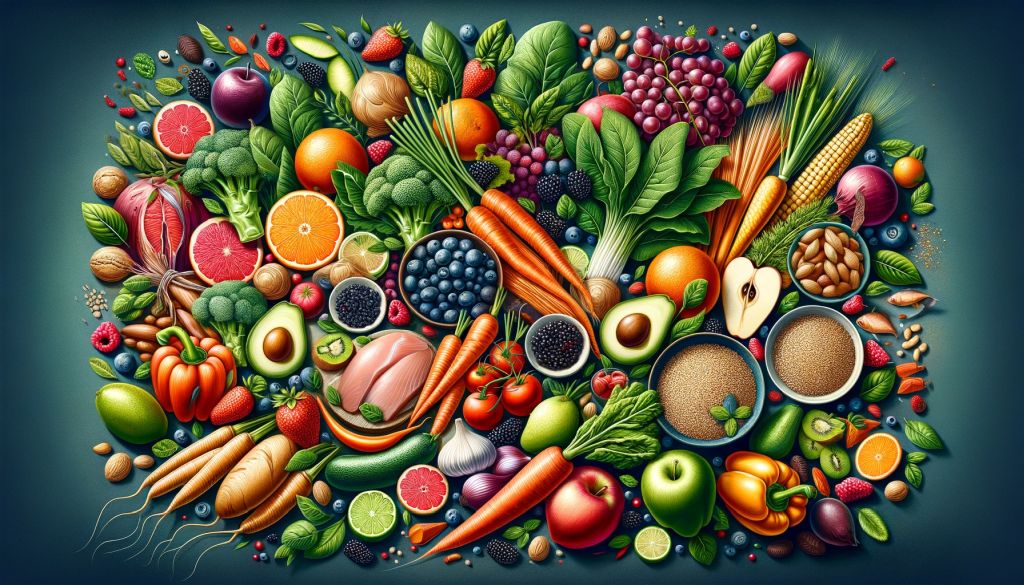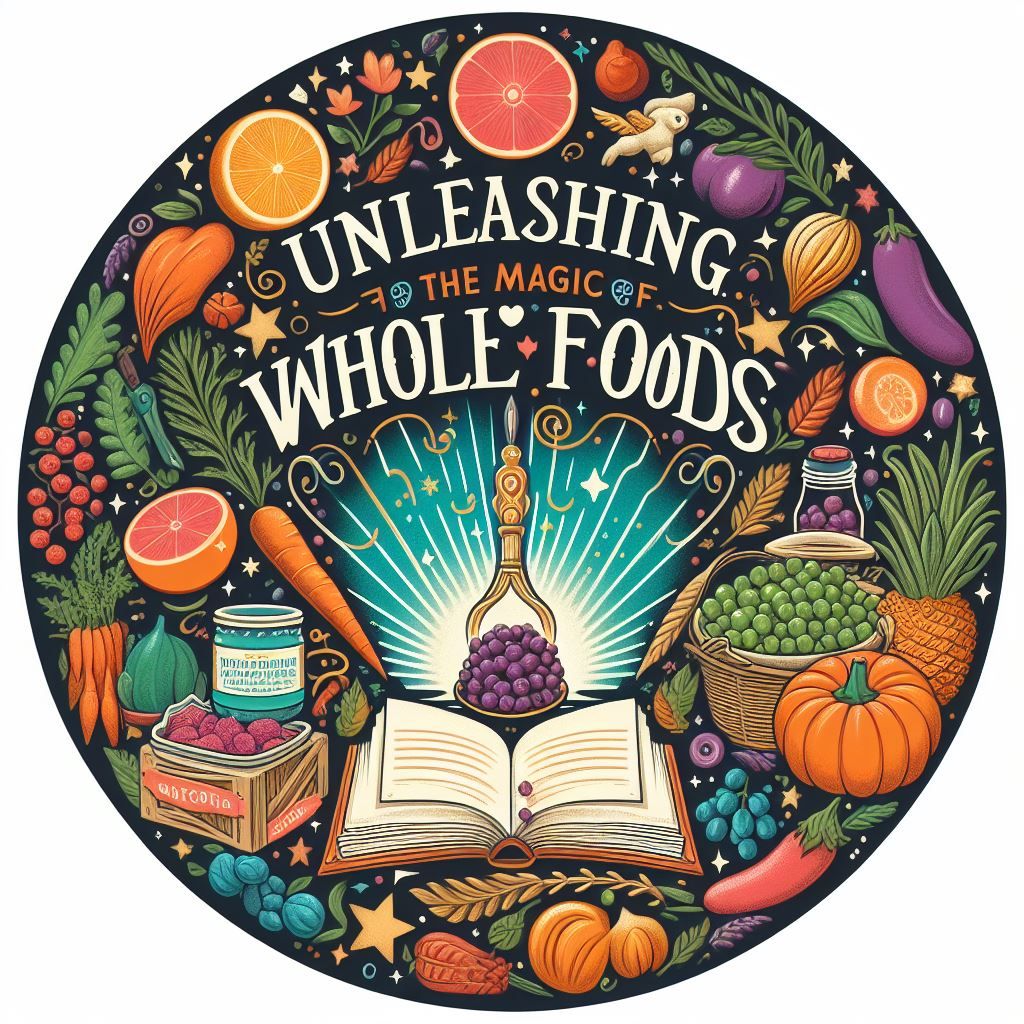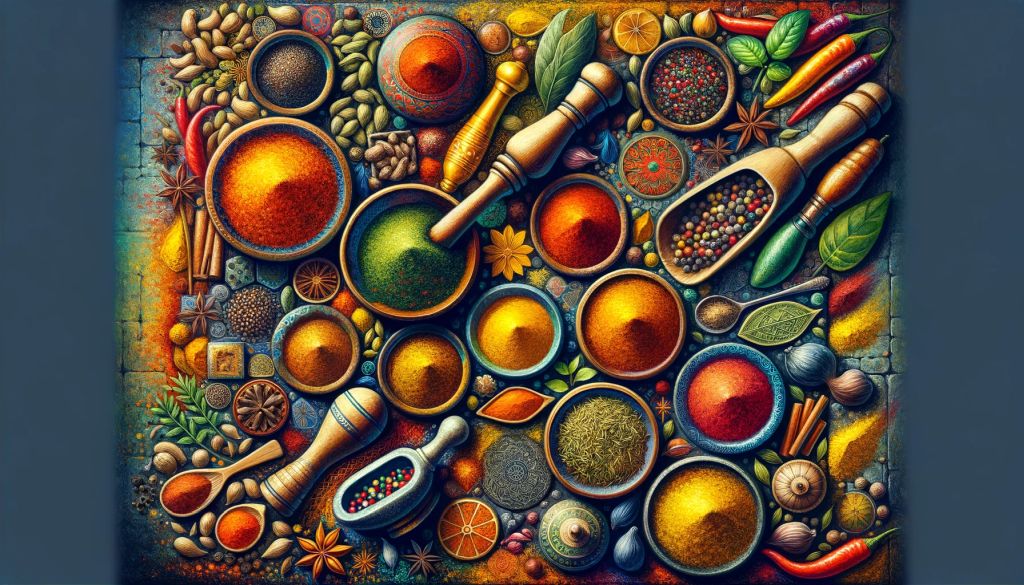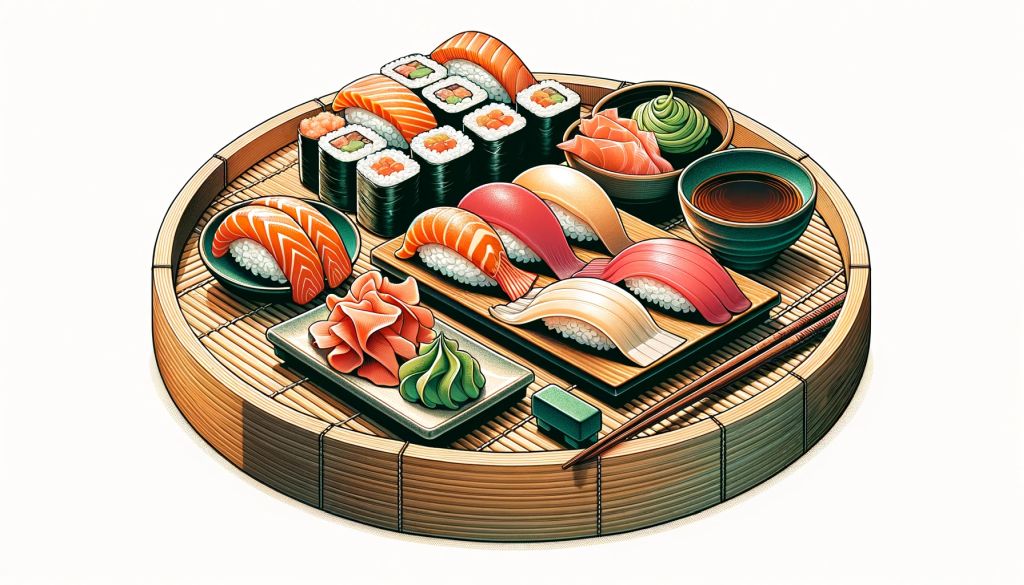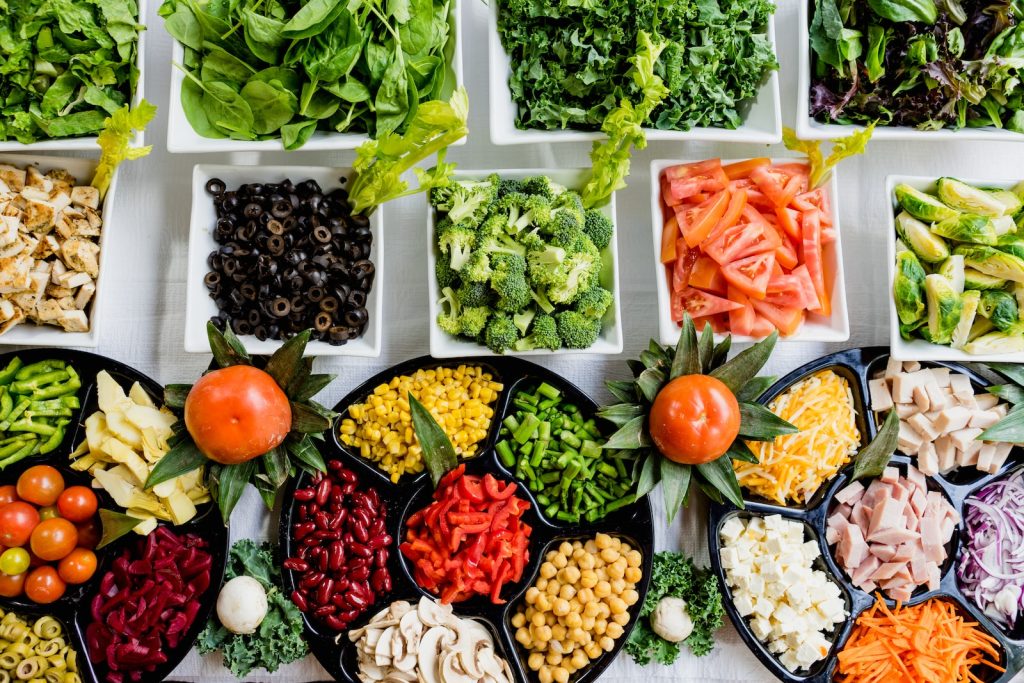
by Health And Healing AI | Jan 27, 2024 | Fitness
Embracing Fitness in Nature Beyond Four Walls – How Nature’s Playground Elevates Your Health

Serene-morning-yoga-session-by-calm-lake.
A Journey to Wellness – Embracing Fitness in Nature
Embracing Fitness in Nature: Are you tired of your typical gym routine?
Have you considered taking your workouts outside and exploring the beauty of nature?
Engaging in outdoor adventures is a fantastic way to improve physical fitness, mental well-being, and connection to nature.
From hiking to kayaking, outdoor activities offer a combination of physical exercise and nature exploration that can promote mental health, social interaction, and environmental awareness.
Research has shown that spending time in nature can reduce stress, improve mood, and boost overall well-being.
Outdoor adventures also allow you to challenge yourself, build resilience, and develop new skills.
In this article, we will explore the benefits of outdoor adventures for fitness enthusiasts and provide tips on how to get started.
Whether you’re a seasoned outdoor adventurer or new to exploring nature, there’s something for everyone.
So, grab your gear and get ready to embark on a journey of fitness and exploration in the great outdoors.
The Benefits of Outdoor Fitness
Fit and healthy, outdoor fitness is an excellent option.
Not only does it provide a change of scenery from the gym, but it also offers a range of physical and mental health benefits.
Physical Health Rewards – Embracing Fitness in Nature
Embracing Fitness in Nature: Outdoor fitness activities such as hiking, rock climbing, and kayaking can help improve your physical health.
These activities require using different muscle groups, which can help improve your overall strength and endurance.
Additionally, exercising outdoors can help boost your immune system, which can help prevent illnesses and infections.
Mental Health and Emotional Well-Being
In addition to physical health benefits, outdoor fitness can positively impact your mental and emotional well-being.
Being in nature can help reduce stress and anxiety, which can help improve your overall mood.
Studies have shown that spending time in nature can also help improve your attention and focus, which can help you stay more productive throughout the day.
Building Strength and Endurance
If you want to build strength and endurance, outdoor fitness activities such as hiking, biking, and running can be very effective.
These activities require you to use your entire body, which can help improve your overall fitness level.
Additionally, exercising outdoors can help increase your lung capacity, which can help improve your endurance.
Overall, outdoor fitness is an excellent way to stay fit and healthy.
Plenty of outdoor fitness activities exist whether you want to improve your physical health, mental well-being, or both.
So, get out there and start exploring the great outdoors!
Engaging with Nature
Regarding fitness, engaging with nature can be a great way to stay active and healthy.
Not only does it provide an opportunity to get some fresh air, but it also offers a chance to connect with the natural world around you.
Here are a few ways you can engage with nature while staying fit.
Connection with the Natural World
Spending time in nature can be a great way to connect with the world around you whether hiking in the mountains, swimming in a lake, or simply walking through a park, being in nature can help you feel more grounded and connected.
Research has shown that spending time in green spaces can positively impact mental health, reducing stress and anxiety.
Exploration and Adventure
Embracing Fitness in Nature: Exploring the great outdoors can be an exciting way to stay active and fit.
There are many ways to get out and explore the world around you, from hiking to kayaking.
National parks, forests, and other green spaces offer many opportunities for outdoor adventure.
Whether you’re looking to challenge yourself with a strenuous hike or want to take a leisurely walk through the woods, there’s something for everyone.
So, whether you want to connect with nature or exercise in a beautiful setting, engaging with the natural world can be a great way to stay active and healthy.
So why not lace up your hiking boots, grab your kayak, and head out into the great outdoors today?
Embracing Fitness in Nature: Discover the Secret Paths to Wellness: Unveiling Top 10 Fitness Tips
Ten Tips for Embracing Fitness in Nature
- Start with a Plan – Research local trails and parks. Choose hiking, running, or cycling routes that match your fitness level and interests.
- Dress Appropriately – Wear weather-appropriate clothing and sturdy footwear. Layering is critical for adapting to changing conditions.
- Stay Hydrated and Nourished – Always bring enough water and healthy snacks. Hydration and energy are crucial when exercising outdoors.
- Safety First – Inform someone about your plans and expected return time. Carry a basic first aid kit, a map, and a phone for emergencies.
- Respect the Environment – Stick to marked trails to preserve natural habitats. Practice “Leave No Trace” principles to minimize your impact.
- Incorporate Variety – Try activities like rock climbing, kayaking, or outdoor yoga to keep your fitness routine exciting and holistic.
- Mindfulness and Connection – Use this time to connect with nature. Practice mindfulness by focusing on your surroundings and the sensations of your activity.
- Regular Scheduling – Make outdoor fitness a routine. Consistency is vital to building and maintaining fitness.
- Join a Group or Find a Buddy – Community engagement can provide motivation, safety, and social interaction.
- Listen to Your Body – Pay attention to how you feel. Adjust your activities to avoid overexertion and accommodate varying fitness levels.
Embrace the beauty and challenge of nature to enhance your fitness journey!
Outdoor Activities and Sports
Exploring fitness in nature can be an exciting and rewarding experience.
Outdoor activities and sports offer various options for getting active in the great outdoors.
Here are some popular outdoor activities and sports you can try:
Hiking and Trekking
Hiking and trekking are popular outdoor activities that offer a great workout while providing an opportunity to explore nature.
Whether you’re a beginner or an experienced hiker, there are trails for every skill level.
Hiking and trekking can help you build endurance, improve cardiovascular health, and strengthen your lower body muscles.
Wear comfortable and sturdy shoes, bring plenty of water, and pack snacks for longer hikes.
Water Sports and Activities
Water sports and activities, such as kayaking, canoeing, and surfing, are excellent ways to get a full-body workout while enjoying the outdoors.
These activities can help improve your upper body strength, core stability, and balance.
Kayaking and canoeing are also low-impact activities that are easy on your joints.
If you’re new to water sports, consider taking a lesson or renting equipment from a local outdoor shop.
Cycling and Mountain Biking
Cycling and mountain biking are great outdoor activities that offer a fun and challenging workout.
Cycling is a low-impact activity that can help improve your cardiovascular health, leg strength, and endurance.
Mountain biking, on the other hand, provides a full-body workout that can help improve your balance, coordination, and agility.
Wear a helmet and other protective gear, and always follow the rules of the road or trail.
Whether your fitness level or interests, outdoor activities, and sports offer a fun and exciting way to get active and explore nature.
So grab your gear and head outside for your next adventure!
Fitness Techniques in the Outdoors

Group-enjoying-sunrise-fitness-hike-in-nature.
Embracing Fitness in Nature: When it comes to fitness in the outdoors, there are many techniques that you can use to stay active and healthy.
Whether you prefer yoga and meditation, running and trail running, or functional outdoor workouts, there is something for everyone.
Yoga and Meditation
Yoga and meditation are great ways to stay fit while enjoying the outdoors.
Not only do they help to improve balance and flexibility, but they also help to reduce stress and promote relaxation.
There are many different yoga and meditation practices, so you can find one that suits your needs and preferences.
Some popular options include Hatha yoga, Vinyasa yoga, and mindfulness meditation.
Running and Trail Running
Running and trail running are excellent ways to exercise cardio while enjoying nature’s beauty.
Running on trails can be incredibly challenging and rewarding, requiring balance and agility.
Wear the appropriate footwear and clothing, and always bring water and snacks.
Functional Outdoor Workouts
Functional outdoor workouts are another great way to stay fit in the outdoors.
These workouts typically involve using your body weight and natural surroundings to perform exercises such as push-ups, squats, and lunges.
You can also use equipment such as resistance bands, kettlebells, and medicine balls to add variety to your workouts.
In conclusion, there are many different fitness techniques that you can use to stay active and healthy in the outdoors.
Whether you prefer yoga and meditation, running and trail running, or functional outdoor workouts, there is something for everyone.
So get outside and start exploring the many benefits of fitness in nature!
Planning and Preparation
Embracing Fitness in Nature: Planning and preparing is essential before embarking on any outdoor adventure.
It includes getting the necessary gear and equipment, understanding safety measures and guidelines, and knowing the route and terrain you will explore.
Essential Gear and Equipment
Having the right gear and equipment can make all the difference in ensuring a successful and enjoyable outdoor adventure.
Whether you are going on a day hike or a multi-day camping trip, some essential items are the following:
- Proper footwear: Invest in good hiking boots or trail shoes that provide excellent traction and support.
- Weather-appropriate clothing: Dress in layers and bring waterproof and windproof gear if necessary.
- Navigation tools: Carry a map, compass, or GPS device to help you navigate.
- Lighting: Bring a flashlight or headlamp and extra batteries.
- First aid kit: Include bandages, antiseptic, pain relievers, and any necessary prescription medications.
- Food and water: Bring enough food and water to sustain you throughout your trip, plus extra in emergencies.
Safety Measures and Guidelines
While outdoor adventures can be enriching, they also come with inherent risks.
It is critical To ensure your safety and the safety of those around you, it is crucial to follow some basic safety measures and guidelines:
- Research the area: Know the terrain, local weather patterns, and potential hazards such as wildlife or unstable terrain.
- Share your plans: Inform someone of your trip itinerary, including your route, expected return time, and emergency contact information.
- Stay on designated trails: Avoid venturing off-trail, as this can lead to getting lost or damaging fragile ecosystems.
- Leave no trace: Pack out all trash and avoid disturbing natural habitats.
- Know your limits: Choose activities that match your abilities and fitness level, and take breaks as needed.
By planning and preparing adequately, you can ensure a safe and enjoyable outdoor adventure.
Remember to prioritize safety and respect for nature, and you’ll be well on your way to an unforgettable experience.
Overcoming Challenges and Building Resilience
Outdoor adventures are a great way to challenge yourself and push beyond your comfort zone.
By doing so, you can develop mental toughness and confidence, which can help you overcome obstacles in other areas of your life.
Mental Toughness and Confidence
When you embark on an outdoor adventure, you will face various challenges that will test your mental and physical limits.
Pushing through these challenges can build mental toughness and confidence in overcoming obstacles.
It can translate to other areas of your life, such as work or personal relationships, where you may face challenges that require mental grit and resilience.
Adapting to Different Environments
Another benefit of outdoor adventures is that they expose you to different environments and situations.
It can help you develop adaptability and resilience as you navigate unfamiliar terrain and overcome unexpected obstacles.
Doing so can build mental clarity and reduce stress as you learn to stay calm and focused in challenging situations.
Overall, outdoor adventures are a great way to build resilience and personal growth.
By pushing beyond your comfort zone and facing challenges head-on, you can develop mental toughness, confidence, and adaptability that can help you overcome obstacles in other areas of your life.
The Social Aspect of Outdoor Fitness
Outdoor fitness is about getting fit and healthy, connecting with others, and building community.
Spending time outside with others who share your passion for adventure and exploration can be incredibly rewarding and help you form lasting friendships.
Community and Collaboration
One of the best things about outdoor fitness is that it brings people together.
Whether hiking through the mountains, kayaking down a river, or climbing a rock face, you’ll be surrounded by others who share your love of the outdoors.
This sense of community can be compelling and help you stay motivated to reach your fitness goals.
Collaboration is also an essential aspect of outdoor fitness.
When you’re out in nature, you’ll often need to work together with others to overcome obstacles and challenges.
It can help you develop essential teamwork skills and build trust with others.
Solo Adventures and Reflection
Embracing Fitness in Nature: While outdoor fitness is often a social activity, there’s also a lot for solo adventures. Spending time alone in nature can be incredibly rewarding and help you connect with yourself more deeply. It can also be a great way to reflect on your life and gain a new perspective.
When you’re alone, you can push yourself to your limits and discover your capabilities. It can be a powerful experience and help you build confidence in yourself and your abilities.
Overall, the social aspect of outdoor fitness is integral to the experience.
Whether you’re collaborating with others or spending time alone in nature, you’ll have the opportunity to connect with others and yourself on a deeper level.
Embracing Outdoor Fitness in Daily Life
Incorporating outdoor fitness into your daily routine can significantly improve your health and overall life satisfaction.
With the rise of sedentary lifestyles, finding ways to stay active and engaged with the world around you is crucial.
Outdoor recreation provides a fun and engaging way to do just that.
One way to get motivated to embrace outdoor fitness is to make it a routine.
Whether it’s a morning jog or an after-work hike, scheduling outdoor activities into your day can help you stay motivated and on track.
You can also find ways to incorporate outdoor fitness into your daily life, such as taking a walk during your lunch break or doing yoga in your backyard.
Another way to stay motivated is to find activities that you enjoy.
Outdoor recreation offers many options, from hiking and biking to kayaking and rock climbing.
By finding activities you enjoy, you’re likelier to stick with them and make them a regular part of your routine.
In addition to improving your physical health, outdoor fitness can provide mental and emotional benefits. Spending time in nature reduces stress and improves mood.
By embracing outdoor fitness, you can give yourself a break from the stresses of daily life and enjoy the beauty of the world around you.
Finally, outdoor fitness doesn’t have to be limited to remote wilderness areas. Many neighborhoods and communities offer parks and trails for outdoor recreation.
By exploring your local area, you can find new and exciting ways to stay active and engaged with nature.
In conclusion, embracing outdoor fitness in your daily life can provide many benefits, from improved health to increased life satisfaction.
By finding activities you enjoy and making them a regular part of your routine, you can stay motivated and engaged with the world around you.
Frequently Asked Questions
What are the best ways to stay active while exploring the outdoors?
Staying active while exploring the outdoors can be fun and easy. Hiking, biking, and swimming are great ways to get your heart rate up while enjoying the beauty of nature.
You can also try rock climbing, kayaking, or even a game of frisbee to keep things interesting. Remember to stay hydrated and take breaks as needed.
Which outdoor activities are known to boost mental well-being?
Studies have shown that spending time in nature can reduce stress, anxiety, and depression.
Walking, camping, and fishing can help you unwind and connect with the natural world. Yoga and meditation are also great options for promoting mental well-being in the great outdoors.
How can beginners get started with outdoor fitness adventures?
If you’re new to outdoor fitness adventures, start by choosing an activity that you enjoy and that fits your fitness level.
Consider taking a guided tour or class to learn the basics and get comfortable with the activity. Always wear appropriate clothing and gear, and bring plenty of water and snacks.
What types of outdoor activities are suitable for college students?
College students can benefit from a wide range of outdoor activities. Walking or biking to class is a great way to stay active and reduce stress.
Joining a sports club or intramural team can help you stay motivated and make new friends. You can also try hiking, camping, or rock climbing with friends.
Can you recommend some nature-friendly exercises for all fitness levels?
There are many nature-friendly exercises that you can do regardless of your fitness level.
Jogging on a nature trail is a great way to start. You can also try bodyweight exercises like push-ups, squats, and lunges in a park or beach.
Yoga and tai chi are also great options for all fitness levels.
How does participating in outdoor sports like disc golf benefit your health?
Participating in outdoor sports like disc golf can benefit your health in many ways. It can help improve cardiovascular health, muscle strength, and hand-eye coordination.
It can also improve mental health by reducing stress and promoting social interaction.
So, grab a frisbee and hit the course for some fun and fitness in the great outdoors!
Wrap-Up
“Embracing Fitness in Nature” is an enlightening guide that beckons readers to merge their fitness routines with the great outdoors.
This thought-provoking article highlights the benefits and unique experiences of stepping out of the gym and into nature’s embrace.
It invites exploring how nature can enhance physical well-being and offer mental and emotional rejuvenation.
The article delves into various ways individuals can integrate natural elements into their workout routines.
From the serenity of yoga beside a tranquil lake to the adrenaline rush of trail running through dense forests, it covers a broad spectrum of activities suitable for all fitness levels.
The piece emphasizes the importance of connecting with the environment, advocating for a holistic approach to health that transcends traditional exercise methods.
It’s not just about breaking a sweat; it’s about nurturing a deeper bond with the natural world, reaping the benefits of fresh air, and discovering the intrinsic rewards of outdoor physical activities.
“Embracing Fitness in Nature” is a compelling read that inspires a shift in perspective, urging readers to find balance and harmony by incorporating the beauty and challenge of the natural world into their fitness journey.
Call to Action – Ready to transform your fitness journey and reconnect with the great outdoors? Don’t wait any longer!
Embrace the unique opportunity to enhance your physical, mental, and emotional well-being by integrating nature into your workout routine.
Start today by choosing one outdoor activity from our list and see the difference for yourself. Remember, every step towards nature is towards a healthier, happier you.
Let’s embark on this journey together – your natural fitness adventure awaits!*
P. S. Want to dive deeper into the world of fitness in nature? Visit our website for more inspiring stories, expert tips, and a supportive community that shares your passion for outdoor wellness. Let’s keep the conversation going and grow stronger together!*

by Health And Healing AI | Jan 18, 2024 | Nutrition
Discover the Power of Nutrition – Supercharge Your Immune System with These Amazing Foods

A healthy array of fresh produce is the key to enhancing immune function.
Supercharging Your Immune System with Nutrients:
Yesterday, under the soft glow of my kitchen light, I held a bottle of vitamin supplements, my eyes tracing over the label with skepticism and curiosity.
Just last week, in my doctor’s office’s sterile, white-walled room, I had been introduced to a revelation.
With her calm and reassuring tone, my doctor explained how a rainbow of nutrients could bolster my immune defenses.
This insight was a beacon of hope for someone whose health seemed as fragile as a leaf in the wind, always catching colds.
I began to see my meals differently – every spoonful of leafy greens and each vibrant fruit slice wasn’t just sustenance; it was a shield, a warrior in my fight for health.
Three months have passed since that pivotal day, and here I stand, a testament to this simple yet profound change.
I feel compelled to share my story, to guide you through the colorful, nutrient-dense landscape that reshaped my well-being.
You’re about to embark on a journey, uncovering the potent power of nature’s medicine cabinet, discreetly tucked away in the everyday foods we often overlook.”
Revolutionize Your Wellness – How the Right Foods Can Turbocharge Your Immunity!

A shopper choosing immune-strengthening groceries at a market.
Supercharging Your Immune System with Nutrients: If you want to boost your immune system, you’re not alone.
With the increasing threat of diseases and viruses, more and more people are seeking ways to strengthen their immunity.
Fortunately, there are several ways to do this, and one of the most effective is consuming nutrient-rich foods.
Your immune system is a complex network of cells, tissues, and organs that work together to defend your body against harmful pathogens.
To function correctly, it requires a variety of nutrients, including vitamins A, C, D, and E, as well as minerals like selenium and zinc.
These nutrients help to support the immune system’s various functions, from producing antibodies to fighting off infections.
Incorporating nutrient-rich foods into your diet can help supercharge your immune system and keep it functioning at its best.
The best foods for boosting immunity include fruits and vegetables, whole grains, lean proteins, and healthy fats.
Eating a balanced diet that includes these foods can give your body the nutrients it needs to stay healthy and fight infections.
Understanding the Immune System
Your immune system is your body’s defense against harmful pathogens like viruses and bacteria.
It is a complex network of cells, tissues, and organs that work together to protect you from infections and diseases.
Understanding how your immune system functions is crucial to keeping it healthy and functioning optimally.
Components of the Immune System
The immune system comprises various components, including immune cells, tissues, and organs.
Some of the critical components of the immune system include:
- White blood cells are also known as leukocytes and are responsible for identifying and destroying foreign invaders in your body.
- T cells: These cells are a type of white blood cell that play a critical role in the immune response by recognizing and attacking specific pathogens.
- Lymph: This is a clear fluid that circulates throughout your body and contains immune cells that help to fight infections.
- Bone marrow is the spongy tissue in the center of your bones that produces blood cells, including white blood cells.
Innate vs. Adaptive Immunity
Supercharging Your Immune System with Nutrients: The immune system is divided into two main categories: innate immunity and adaptive immunity.
- Innate immunity: This is the first line of defense against pathogens and is present from birth. It includes physical barriers, such as the skin and mucous membranes, and immune cells that can quickly identify and destroy foreign invaders.
- Adaptive immunity is a more specific and targeted response to pathogens that develops over time. It involves the production of antibodies that can specifically recognize and target a particular pathogen.
Understanding the different components of the immune system and how they work together is essential to maintaining a healthy and functioning immune system.
By providing your body with the necessary nutrients and avoiding infections, you can help support your immune system and keep it functioning optimally.
Nutritional Building Blocks for Immunity
When it comes to supercharging your immune system, a few nutrients should be on your radar.
These include vitamins, minerals, proteins, and amino acids.
Incorporating these into your diet can help your body fight infections, viruses, and diseases.
Vitamins Essential for Immune Function
Vitamins play a crucial role in supporting your immune system.
Some of the most essential vitamins for immunity include:
- Vitamin C: This antioxidant is well-known for its immune-boosting properties. It helps protect your cells from damage, enhances the function of immune cells, and may even shorten the duration of colds and other infections.
- Vitamin A: This vitamin is essential for the health of your skin and mucous membranes, which act as a barrier against pathogens. It also helps regulate immune cell function and can reduce inflammation.
- Vitamin E: Another potent antioxidant, vitamin E helps protect your immune cells from damage and supports their function.
Minerals That Support Immunity
Minerals are also essential building blocks for a robust immune system.
Some of the most critical minerals for immunity include:
- Zinc: This mineral is essential for the development and function of immune cells. It also helps regulate inflammation and reduce infection severity and duration.
- Selenium: This mineral is vital for the function of immune cells and can help reduce inflammation.
- Iron is essential for producing hemoglobin, which carries oxygen to your cells. It also plays a role in immune cell function.
Proteins and Amino Acids
Proteins and amino acids are the building blocks of your body, and they play a crucial role in immune function.
Some of the most essential proteins and amino acids for immunity include:
- Protein: Your body needs protein to build and repair tissues, including those of your immune system. Aim to get protein from various sources, including lean meats, fish, beans, and dairy products.
- Amino acids: Amino acids are the building blocks of proteins, and some are particularly important for immune function. These include glutamine, arginine, and cysteine.
By incorporating these nutritional building blocks into your diet, you can give your immune system the support it needs to fight off infections and stay strong and healthy.
Dietary Choices to Boost Immunity
Your dietary choices can have a significant impact on your immune system. Certain foods can help strengthen your immune system, while others can weaken it.
Here are some foods to incorporate and avoid to supercharge your immunity.
Foods to Incorporate
Incorporating these foods into your diet can help to boost your immune system:
- Fruits and Vegetables: Fruits and vegetables are rich in vitamins and minerals essential for a healthy immune system. Try to eat various colorful fruits and vegetables to get various nutrients.
- Nuts and Seeds: Nuts and seeds are a great source of healthy fats, protein, vitamins, and minerals.Some nuts and seeds, such as almonds and sunflower seeds, are also high in vitamin E, which can help boost your immune system.
- Whole Grains: Whole grains, such as brown rice, quinoa, and whole wheat bread, are a good source of fiber and can help to support your immune system by feeding the healthy bacteria in your gut.
Foods to Avoid
Avoiding these foods can help to keep your immune system strong:
- Sugar: Consuming too much sugar can weaken your immune system by reducing the ability of white blood cells to fight off infections. Try to limit your intake of sugary foods and drinks.|
- Alcohol: Drinking too much alcohol can also weaken your immune system by reducing the ability of white blood cells to fight off infections. Try to limit your alcohol intake to no more than one drink per day for women and two drinks per day for men.
- Unhealthy Fats: Consuming too much unhealthy fats, such as saturated and trans fats, can also weaken your immune system. Limit your intake of fried foods, processed snacks, and fatty meats.
By incorporating these foods into your diet and avoiding the ones that can weaken your immune system, you can help to supercharge your immunity and stay healthy.
The Role of Gut Health in Immune Function

From Plate to Power – Eating Strategies for Maximum Immune Strength. Photo by Vitalii Pavlyshynets
Supercharging Your Immune System with Nutrients: Your gut health plays a crucial role in your immune function.
The gut is home to trillions of microorganisms, collectively known as the microbiome, interacting with the immune system to maintain a healthy balance.
Microbiome and Immunity
Studies have shown that the microbiome is essential for the development and function of the immune system.
The gut microbiome helps regulate the immune response by promoting the production of anti-inflammatory molecules and preventing inflammation.
Furthermore, the gut microbiome produces short-chain fatty acids (SCFAs), essential for maintaining gut health and modulating the immune system.
SCFAs promote the growth of beneficial bacteria, which help to protect against harmful pathogens and promote overall immune health.
Probiotics and Fermented Foods
Probiotics are live microorganisms that provide health benefits when consumed in adequate amounts.
Probiotics can be found in fermented foods such as yogurt, kefir, sauerkraut, and kimchi.
Consuming probiotics has been shown to improve gut health and boost immune function.
Probiotics can help to increase the production of beneficial bacteria in the gut, which can help to protect against harmful pathogens and promote overall immune health.
In addition to probiotics, consuming fermented foods can also provide health benefits.
Fermented foods contain beneficial bacteria and enzymes that can help to improve gut health and boost immune function.
Consuming a diet high in fiber can also promote gut health and boost immune function.
Fiber helps to promote the growth of beneficial bacteria in the gut, which can help to protect against harmful pathogens and promote overall immune health.
In summary, maintaining a healthy gut microbiome through probiotics, fermented foods, and fiber can help boost immune function and promote overall health.
Lifestyle Factors Influencing Immunity
Supercharging Your Immune System with Nutrients: Maintaining a healthy immune system is essential for overall well-being and longevity.
While genetics plays a role in immunity, lifestyle factors such as exercise, sleep, and stress management can significantly impact immune function.
Exercise and Immune Health

Elevate Your Health – Nutrient Foods for Immune Strength with Exercise. Photo by Marcus Aurelius
Regular physical activity has been shown to enhance immune function and reduce the risk of chronic diseases.
Exercise increases blood flow and oxygen delivery, which helps immune cells circulate throughout the body.
It also stimulates the production of cytokines, which are essential for immune system communication and activation.
However, it’s important to note that excessive exercise can have the opposite effect and weaken the immune system.
Overtraining can lead to increased inflammation and oxidative stress, impairing immune function.
Therefore, moderate-intensity exercise for at least 30 minutes daily is recommended most days.
Sleep and Immune Function
Sleep plays a crucial role in immune function, allowing the body to repair and regenerate.
During sleep, the immune system produces cytokines that help fight off infection, inflammation, and stress.
Lack of sleep, conversely, can impair immune function and increase the risk of infections.
Chronic sleep deprivation is linked to a higher risk of obesity, diabetes, and cardiovascular disease, all of which can weaken the immune system.
Therefore, aiming for 7-9 hours of sleep per night is recommended to support immune function.
Stress and Its Impact on Immunity
Stress can profoundly impact immune function, as it triggers the release of cortisol and other stress hormones that can suppress the immune system.
Chronic stress can lead to inflammation, oxidative stress, and immune dysfunction, increasing the risk of infections and chronic diseases.
Therefore, it’s essential to manage stress through relaxation techniques such as meditation, deep breathing, and yoga.
Engaging in enjoyable activities, spending time in nature, and connecting with loved ones can also help reduce stress and support immune function.
Overall, lifestyle factors such as exercise, sleep, and stress management are crucial in immune function.
By prioritizing these factors, you can supercharge your immune system and support overall health and well-being.
Supplementation for Enhanced Immune Support
If you’re looking to supercharge your immune system, supplements can be a helpful addition to your diet.
However, it’s important to remember that supplements should not be used as a replacement for a healthy diet and lifestyle.
When to Consider Supplements
If you cannot get all the nutrients your body needs from your diet, supplements can help fill in the gaps.
For example, if you live in a region with limited sun exposure, taking a Vitamin D supplement can help ensure your body gets enough of this critical nutrient.
Similarly, if you don’t eat a lot of fatty fish, taking an Omega-3 supplement can help you get the recommended daily intake of this essential fatty acid.
It’s also important to consider supplements if you have a compromised immune system or are at a higher risk of infection.
In these cases, certain supplements may help boost your immune system and reduce your risk of illness.
Choosing the Right Supplements
When choosing supplements for immune support, it’s essential to do your research and choose high-quality products from reputable brands.
Look for supplements that have been third-party tested and certified to ensure their purity and potency.
Some supplements that may be helpful for immune support include:
- Vitamin D: This nutrient is essential for immune function and can help reduce the risk of respiratory infections.
- Vitamin C: This antioxidant can help boost immune function and reduce the severity of cold and flu symptoms.
- Zinc: This mineral is essential for immune function and can help reduce the duration and severity of colds.
- Probiotics: These beneficial bacteria can help support gut health and boost immune function.
- Omega-3 fatty acids: These essential fatty acids are important for overall health and can help reduce inflammation and boost immune function.
Remember, supplements should be used with a healthy diet and lifestyle, not as a replacement for them.
Please speak with your healthcare provider before starting any new supplement regimen to ensure it’s safe and appropriate for your needs.
Immunity Throughout the Life Course

Nutrient-filled smoothies with vibrant fruits and vegetables for health.
Supercharging Your Immune System with Nutrients: As you age, your immune system undergoes changes that can impact its ability to protect your body from infections.
Various micronutrients are essential for immunocompetence, particularly vitamins A, C, D, E, B2, B6, B12, folic acid, iron, selenium, and zinc.
Micronutrient deficiencies are a recognized global public health issue, and poor nutritional status predisposes to certain infections.
Immune System Changes with Age
As you age, your immune system undergoes changes that can impact its ability to protect your body from infections.
The thymus, an organ that produces T cells, begins to shrink after puberty.
It decreases the production of new T cells, impacting your ability to fight off new infections.
Additionally, older people may experience a decline in the function of their existing T cells, which can further impair immune function.
Special Considerations for Older People
Older people are at an increased risk of developing infections due to changes in their immune system.
For example, older people may have a decreased response to vaccines, making them more susceptible to infections like the flu.
Additionally, older people may experience a decline in the function of their existing T cells, which can further impair immune function.
Consuming a diet rich in nutrients that support immune function is vital.
Nutrients like vitamin C, D, and zinc can all support immune function and may help reduce the risk of infections.
Additionally, older people may benefit from consuming a diet high in protein to support the production of new T cells.
By consuming a nutrient-rich diet and supporting your immune system, you can help keep your body healthy and protect against infections.
Preventing and Fighting Infections
Common Illnesses and Immune Response

The Power of Nutrition – How Your Diet Can Transform Your Immune System. Photo by Karolina Grabowska
Your immune system fights off infections caused by bacteria, viruses, and other pathogens.
Common illnesses like the cold, flu, and pneumonia are caused by infectious agents that your immune system must recognize and eliminate.
When your body is exposed to an antigen, like a virus, your immune system produces antibodies to fight it off.
These antibodies help your immune system recognize and fight off the same antigen in the future.
Nutrition’s Role in Disease Prevention
Proper nutrition is essential for a healthy immune system.
Eating a balanced diet rich in vitamins and minerals can help prevent infections and support your immune system’s response to antigens.
Vitamin C, found in citrus fruits and leafy greens, boosts immune function by increasing the production of white blood cells that fight infections.
Zinc, found in nuts, seeds, and legumes, also plays a critical role in immune function by supporting the growth and development of immune cells.
Clinical trials have shown that certain nutrients can help prevent and treat infections.
For example, a study published in the Journal of the American Medical Association found that high doses of vitamin C intravenously reduced the severity of symptoms and duration of the common cold.
Another study found that zinc supplements reduced the duration and severity of symptoms in patients with the flu.
While proper nutrition is essential for a healthy immune system, it is important to remember that no single nutrient or food can prevent or cure infections.
The best way to prevent infections is to practice good hygiene, like washing your hands frequently and avoiding contact with sick individuals.
If you get sick, rest and stay hydrated while your immune system fights off the infection.
Nutrient-rich foods can help supercharge your immune system. Some essential nutrients to focus on include:
– Vitamin C, found in citrus fruits, kiwi, and broccoli, supports immune function (source: [Verywell Health](https://www.verywellhealth.com/types-of-foods-to-boost-your-immune-system-89020)).
– Vitamin E, present in nuts and seeds, acts as an antioxidant to protect cells from damaged sources: Verywell Health – https://www.verywellhealth.com/types-of-foods-to-boost-your-immune-system-89020.
– Zinc, found in meat, shellfish, and legumes, plays a crucial role in immune cell function source: Healthline – https://www.healthline.com/health/food-nutrition/foods-that-boost-the-immune-system.
– Omega-3 fatty acids, abundant in fish like salmon and sardines, enhance immune cell functioning source: Everyday Health – https://www.everydayhealth.com/diet-nutrition/7-foods-fight-back-immune-system-boosters/.
Incorporating these nutrients into your diet can contribute to a robust immune system.
Frequently Asked Questions

Healthy array of green leafy vegetables, rich in nutrients and organic quality.
What are the top foods known to enhance immune system function?
A diet rich in fruits, vegetables, whole grains, lean proteins, and healthy fats is essential for a robust immune system.
Top foods that enhance immune system function include garlic, ginger, turmeric, green tea, berries, citrus fruits, leafy greens, nuts, and seeds.
These foods are rich in antioxidants, vitamins, and minerals that help to support the immune system.
Which vitamins and minerals are most important for a healthy immune response?
Vitamins A, C, D, and E and minerals like zinc, selenium, and iron are essential for a healthy immune response.
These nutrients help to support the production of white blood cells and antibodies, essential for fighting off infections and diseases.
How does adequate protein intake affect the body’s immune defenses?
Protein is essential for building and repairing tissues, including those of the immune system.
Adequate protein intake helps to support the production of white blood cells, antibodies, and other immune system components.
Good protein sources include lean meats, poultry, fish, beans, lentils, nuts, and seeds.
Can you list the best fruits for immune support in your diet?
Some of the best fruits to include in your diet for immune support include citrus fruits like oranges and grapefruits, berries like strawberries and blueberries, kiwi, papaya, and apples.
These fruits are all rich in vitamins and antioxidants that help to support the immune system.
What are the critical dietary strategies for maintaining a robust immune system?
The vital dietary strategies for maintaining a robust immune system include eating a balanced diet rich in fruits, vegetables, whole grains, lean proteins, and healthy fats.
Staying hydrated, getting enough sleep, managing stress levels, and exercising is also essential.
How does overall nutrition play a role in the strength and resilience of our immunity?
Overall, nutrition plays a critical role in the strength and resilience of our immunity.
A diet rich in nutrients like vitamins, minerals, and antioxidants helps support the immune system and reduce the risk of infections and diseases.
On the other hand, a diet that is high in processed foods, sugar, and unhealthy fats can weaken the immune system and make us more susceptible to illness.
Wrap-Up
“Supercharging Your Immune System with Nutrient-rich Foods” is an insightful exploration into the powerful relationship between our diet and immune health.
This essential guide illuminates how the right foods can significantly enhance our body’s ability to fight infections and maintain optimal health.
The article provides practical advice on how to fortify our immune system naturally.
The piece delves into various superfoods and their specific benefits, highlighting ingredients like berries, leafy greens, nuts, and seeds packed with vitamins, minerals, and antioxidants.
It emphasizes the importance of a balanced diet rich in these elements for boosting immunity.
The article suggests what to eat and explains the science behind how these nutrients strengthen the body’s defense mechanisms.
Recipes and tips for incorporating these foods into daily meals make it easy for readers to start their journey toward a more resilient immune system.
There are many ways to boost your immune system health, such as getting enough sleep, eating a balanced diet, exercising regularly, avoiding smoking and excessive alcohol, and keeping up with recommended vaccines.
Some foods that may help your immunity include fruits, vegetables, nuts, seeds, legumes, and healthy fats.
Some vitamins and herbs, such as vitamin C, zinc, garlic, echinacea, and elderberry, may also have immune-boosting effects.
However, you should always consult your doctor before taking any supplements or herbal remedies, as they may interact with your medications or have side effects.
Summary
- You should follow a healthy lifestyle and eat various plant foods to boost your immune system health.
- Some vitamins and herbs may also help, but you should check with your doctor first.
This comprehensive article is a must-read for anyone looking to naturally enhance their health and well-being through the power of nutrition.

by Health And Healing AI | Jan 16, 2024 | Nutrition
Explore the Wonders of Clean Eating: A Journey to Transformative Health

Kitchen essentials, Curiosity Unleashed – How Clean Eating Revolutionizes Your Health Journey
The power of clean eating lies in its ability to transform health through nutrient-packed recipes.
Explore the Wonders of Clean Eating: By focusing on whole, unprocessed foods, clean eating can provide an abundance of essential nutrients while reducing the intake of additives and preservatives.
This approach can improve energy levels, digestion, and overall well-being.
Suppose you’re looking to explore nutrient-packed recipes. In that case, you can find various options in resources such as Health Balanced Meal Plan. https://www.verywellfit.com/an-example-of-a-healthy-balanced-meal-plan-2506647 and Clean Eating Magazine’s recipe section https://www.cleaneatingmag.com/clean-eating-recipes/.
Eating Clean, Living Vibrant: Curiosity’s Role in Nutritional Wellness
Explore the Wonders of Clean Eating: Are you looking for a way to improve your health and well-being? Clean eating may be the answer you’ve been searching for.
Clean eating involves choosing whole foods that are minimally processed and free of additives and preservatives.
Focusing on nutrient-dense foods can fuel your body with the vitamins and minerals it needs to thrive.
Clean eating is more than just a diet – it’s a lifestyle. Changing your eating habits can transform your health and feel your best.
Whether you want to lose weight, boost your energy levels, or feel better overall, clean eating can help you achieve your goals.
With a focus on fresh fruits and vegetables, lean proteins, and healthy fats, clean eating is a sustainable way to nourish your body and improve your overall health.
The Basics of Clean Eating
Understanding Clean Eating
Explore the Wonders of Clean Eating Clean eating is a lifestyle that emphasizes eating natural, whole foods that are minimally processed and free from additives and preservatives.
It’s about choosing foods as close to their natural state as possible and avoiding highly processed foods, often loaded with added sugars, unhealthy fats, and other harmful ingredients.
Clean eating is about nourishing your body with nutrient-dense foods that provide the vitamins, minerals, and other essential nutrients your body needs to function at its best.
Focusing on whole, unprocessed foods can help your body function more efficiently and reduce your risk of chronic diseases like heart disease, diabetes, and cancer.
Benefits of a Clean Diet
There are many benefits to adopting a clean eating lifestyle. By choosing whole, natural foods, you can:
- Improve your overall health and well-being
- Boost your energy levels and improve your mood
- Maintain a healthy weight and reduce your risk of obesity
- Lower your risk of chronic diseases like heart disease, diabetes, and cancer
- Improve your digestion and reduce your risk of digestive disorders
- Enhance your immune system and reduce your risk of infections
In addition to these health benefits, many people find that clean eating helps them feel more satisfied and less hungry throughout the day.
By choosing foods rich in nutrients and low in calories, you can feel full and satisfied without overeating or consuming excessive amounts of unhealthy fats and sugars.
Clean eating is a simple yet powerful way to transform your health and improve your overall well-being.
You can enjoy a healthier, happier life by making minor changes to your diet and focusing on whole, natural foods.
Essential Nutrients for Health – Explore the Wonders of Clean Eating
Eating clean and nutrient-dense foods is an essential part of a healthy lifestyle.
Nutrient-packed foods provide your body with the necessary vitamins, minerals, fiber, and water to maintain optimal health.
In this section, we will explore the essential nutrients that your body needs to function correctly.
Macronutrients and Micronutrients
Explore the Wonders of Clean Eating: Macronutrients are the nutrients your body needs in large quantities. They include carbohydrates, proteins, and fats.
Carbohydrates are the primary source of energy for your body.
Proteins are essential for building and repairing tissues, while fats help your body absorb vitamins and minerals.
On the other hand, micronutrients are the nutrients your body needs in smaller quantities. They include vitamins and minerals.
Vitamins are essential for maintaining a healthy immune system, while minerals are necessary for building strong bones and teeth.
The Role of Fiber and Water
Fiber and water are essential nutrients your body needs to function correctly.
Fiber helps regulate your digestive system and can help lower your risk of heart disease and diabetes.
Water is necessary to keep your body hydrated and regulate your body temperature.
To ensure you get enough fiber and water, include plenty of fruits, vegetables, and whole grains.
Drinking at least eight glasses of water can also help ensure you stay hydrated.
In summary, by eating nutrient-dense foods that provide your body with the necessary macronutrients, micronutrients, fiber, and water, you can transform your health and improve your overall well-being.
Planning Your Clean Eating Journey
Explore the Wonders of Clean Eating: Embarking on a clean eating journey can be overwhelming, but it can be a smooth transition with proper planning. Here are some tips to help you get started:
Creating a Balanced Meal Plan
A balanced meal plan ensures you get all the necessary nutrients. Start by planning your meals for the week and creating a grocery list.
It will help you stay on track and avoid impulse purchases at the grocery store.
When planning your meals, aim to include a variety of whole foods such as fruits, vegetables, whole grains, and lean proteins.
You can also incorporate healthy fats such as avocado, nuts, and seeds. Don’t forget to hydrate by drinking plenty of water and incorporating herbal teas.
To make meal planning easier, consider batch cooking and meal prepping. It will save you time and ensure you always have healthy meals.
Shopping for Clean Ingredients
It’s important to read ingredient lists carefully when shopping for clean ingredients.
Look for ingredients that are minimally processed and free from additives and preservatives.
Opt for organic produce whenever possible to reduce exposure to pesticides.
Shop the grocery store’s perimeter, where fresh produce, meats, and dairy are located.
Avoid the center aisles where processed foods are typically found.
Opt for whole grains such as brown rice, quinoa, and oats when shopping for grains. These are higher in fiber and nutrients than refined grains.
Incorporating clean eating into your lifestyle can be a rewarding journey.
Proper planning and preparation allow you to transform your health and enjoy delicious, nutrient-packed meals.
Wholesome Meal Ideas

An assortment of healthy snacks like nuts, seeds, and fruit slices, presented appealingly and temptingly.
Eating clean, nutrient-dense foods can profoundly impact your overall health and well-being.
Here are some wholesome meal ideas to help you get started:
Breakfast Options
Starting your day with a nutritious breakfast is essential for maintaining energy levels and feeling full throughout the morning.
Here are some clean eating breakfast options to help you kickstart your day:
- Avocado Toast: Mash up half an avocado and spread it over a slice of whole-grain toast. Top with sea salt and red pepper flakes for added flavor.
- Greek Yogurt Parfait: Layer Greek yogurt, fresh berries, and granola in a mason jar for a quick and easy breakfast on the go.
- Egg and Veggie Scramble: Sautee chopped veggies (bell peppers, onions, and spinach) in a pan with olive oil. Add in two scrambled eggs and cook until the eggs are set.
Lunch and Dinner Recipes
Eating clean doesn’t mean sacrificing flavor.
Here are some delicious lunch and dinner recipes that are packed with nutrients:
- Quinoa and Black Bean Salad: Cook quinoa according to package instructions and mix with black beans, chopped veggies (such as tomatoes, corn, and red onion), and a homemade dressing made from olive oil, lime juice, and cumin.
- Baked Salmon with Roasted Vegetables: Season a salmon fillet with salt and pepper, and bake in the oven at 400 degrees for 12-15 minutes. Serve with roasted veggies (such as broccoli, carrots, and sweet potatoes) drizzled with olive oil and seasoned with garlic powder and paprika.
- Turkey and Veggie Stir-Fry: Sautee ground turkey in a pan with chopped veggies (such as bell peppers, broccoli, and carrots) and a homemade stir-fry sauce made from soy sauce, honey, and ginger. Serve over brown rice or quinoa.
By incorporating these clean eating meal ideas into your routine, you can discover the power of nutrient-packed recipes and transform your health.
Understanding Food Labels

Looking for added sugars, sodium, and other unhealthy additives is essential. Photo by Maria Orlova
Explore the Wonders of Clean Eating: Eating clean means choosing foods as close to their natural state as possible.
But with so many packaged foods on the market, it can be challenging to determine which products align with your clean eating goals.
That’s where food labels come in handy. Understanding food labels can help you make informed decisions about your food.
Deciphering Ingredient Lists
The ingredient list is a critical component of any food label. It is a list of all the ingredients that make up a particular product in order of quantity.
It means that the first ingredient listed is the one that makes up the most significant proportion of the product, while the last ingredient listed makes up the most minor proportion.
When reading ingredient lists, looking for added sugars, sodium, and other unhealthy additives is essential.
Added sugars can be listed under various names, such as high fructose corn syrup, cane sugar, or maltodextrin. Sodium can also be listed under different names, such as sodium chloride or monosodium glutamate (MSG).
Identifying Hidden Sugars
Another critical aspect of food labels is the section on sugars. This section lists the amount of total sugars in a product and the amount of added sugars.
Added sugars are added to a product during processing and can contribute to weight gain, inflammation, and other health issues.
To identify hidden sugars, look for words that end in “-ose,” such as fructose, glucose, and sucrose.
You should also be wary of products that list sugar as one of the first few ingredients.
Serving Size and Packaged Foods
When reading food labels, paying attention to serving size is essential.
This is because the nutritional information on the label is based on one serving of the product.
If you consume more than one serving, you must adjust the nutritional information accordingly.
Packaged foods can also be tricky, as they often contain multiple servings per package.
To avoid overeating, check the serving size and adjust your portions accordingly.
In conclusion, understanding food labels is an integral part of eating clean.
You can make informed decisions about the foods you consume by deciphering ingredient lists, identifying hidden sugars, and paying attention to serving size.
Incorporating Superfoods – Explore the Wonders of Clean Eating

Dive into the World of Clean Eating – Discover How Nutrients Can Reshape Your Health with superfoods. Photo by Maddi Bazzocco
Incorporating superfoods into your diet is a great place to start if you want to transform your health with clean eating.
Superfoods are packed with nutrients that can help boost your immune system, improve your heart health, and give you more energy throughout the day.
Here are some benefits of superfoods and examples of nutrient-dense superfoods to add to your meals.
Benefits of Superfoods
Superfoods contain vitamins, minerals, and antioxidants that can help reduce inflammation, lower cholesterol, and lower your risk of chronic diseases.
Berries, for example, are a great source of antioxidants that can help protect your cells from damage caused by free radicals.
Kale is another superfood high in vitamins A and C, which can help support your immune system.
Quinoa is a nutrient-dense grain high in protein, fiber, and iron, making it a great addition to any meal.
Examples of Nutrient-Dense Superfoods
Here are some examples of superfoods that you can easily incorporate into your meals:
- Berries: Blueberries, raspberries, strawberries, and blackberries are all great sources of antioxidants and fiber.
- Kale: This leafy green contains vitamins A and C, calcium, and iron.
- Quinoa: This grain is high in protein, fiber, and iron, making it a great alternative to rice or pasta.
- Avocados: These fruits are high in healthy fats, fiber, and potassium, making them a great addition to salads or as a spread on toast.
- Nuts and seeds: Almonds, chia, and flax seeds are all great sources of healthy fats, protein, and fiber.
Incorporating these superfoods into your diet is a great way to boost nutrient intake and improve overall health.
Add some berries to your morning oatmeal, toss some kale into your salad, or swap your rice for quinoa.
With some creativity, you can easily incorporate these nutrient-dense superfoods into your meals and start reaping the benefits of clean eating.
Avoiding Common Pitfalls

Cravings can be one of the biggest challenges regarding clean eating. Try OrganicPhoto by Fuzzy Rescue
Explore the Wonders of Clean Eating: When it comes to clean eating, there are a few common pitfalls that many people encounter.
Here are some tips to help you deal with cravings, eating out, and social events without derailing your progress.
Dealing with Cravings
Cravings can be one of the biggest challenges regarding clean eating.
Whether you’re craving something sweet, salty, or fatty, it’s essential to have a plan in place to help you stay on track.
One strategy is to keep healthy snacks that satisfy your cravings without derailing your progress.
For example, try a piece of fruit or dark chocolate if you’re craving something sweet.
If you crave something salty, try roasted nuts or veggies with hummus.
Another strategy is to practice mindfulness when you’re experiencing cravings.
Take a few deep breaths and ask yourself if you’re starving or just experiencing a craving.
If you’re starving, reach for a healthy snack. If you’re experiencing a craving, try to distract yourself with a healthy activity, such as going for a walk or doing some yoga.
Eating Out and Social Events
Eating out and social events can also be challenging regarding clean eating.
However, with some planning, you can still enjoy these occasions without derailing your progress.
One strategy is to research the restaurant or event beforehand and look for healthy options on the menu.
Many restaurants offer healthy options like salads, grilled meats, and veggies.
If you’re attending a social event, offer to bring a healthy dish to share.
Another strategy is to practice portion control.
Many restaurants and social events offer ample portions, which can be tempting to overindulge in. Instead, stick to a smaller portion size and savor each bite.
You can also ask for a to-go box and take the rest home for another meal.
Following these tips can avoid common pitfalls and stay on track with your clean eating goals.
Remember, it’s all about balance and control, not deprivation or restriction.
Sustaining a Clean Lifestyle

Discover the Ingredients from the kitchen – Clean Eating for a Curious Palate
Congratulations on taking the first step towards a healthier you by adopting clean eating.
While starting a clean eating lifestyle may seem daunting, sustaining it can be even more challenging.
However, with the right mindset and support, you can make it a lifelong habit that will benefit your health and well-being.
Long-Term Health Benefits
One of the most significant benefits of clean eating is its long-term health benefits.
By consuming nutrient-dense foods, you provide your body with the necessary vitamins, minerals, and antioxidants to function optimally.
It can help prevent chronic diseases like heart disease, diabetes, and certain cancers.
In addition, clean eating can also aid in weight loss and weight management.
By consuming whole foods that are low in calories and high in fiber, you can feel fuller for longer and avoid overeating.
It can lead to sustainable weight loss and improved overall health.
Community and Support
Another essential aspect of sustaining a clean lifestyle is finding a supportive community.
Surrounding yourself with like-minded individuals who share similar goals and values can help keep you motivated and accountable.
Consider joining a clean eating support group or participating in a healthy cooking class to connect with others on a similar journey.
Involving your family and friends in your clean eating lifestyle can make it more enjoyable and sustainable.
Please encourage them to try new recipes with you or plan a healthy potluck dinner. It can create a sense of community and support to help you stay on track.
Remember, sustaining a clean lifestyle is not about perfection but progress.
Celebrate your successes, learn from your setbacks, and keep moving towards a happier and healthier you.
H2 Clean Eating Recipes
Explore the Wonders of Clean Eating: If you are looking for some inspiration for clean eating recipes, you can check out these web pages:
- 30 Days of Clean-Eating Recipes: This page offers a variety of healthy and tasty dishes that use whole foods and minimally processed ingredients.You can find soups, salads, pasta, fish, chicken, and more recipes.
- 20 Clean-Eating Dinners in 20 Minutes: This page shows you how to make quick and easy dinners packed with vegetables, whole grains, healthy fats, and proteins. You can find recipes for scampi, poke bowls, falafel, carbonara, and more.
- 55 Clean Eating Recipes: This page features a collection of clean eating recipes for breakfast, lunch, dinner, and snacks.You can find omelet recipes, garlic chicken, spiced applesauce, and more.
Frequently Asked Questions – Explore the Wonders of Clean Eating
How can I get started with a clean eating diet?
Getting started with a clean eating diet can be overwhelming, but it doesn’t have to be.
Add more whole foods, such as fruits, vegetables, whole grains, and lean proteins, into your meals.
Avoid processed foods, sugary drinks, and foods high in saturated fats.
Gradually make these changes to your diet and experiment with new recipes to keep things interesting.
What are some easy, clean-eating recipes for beginners?
There are plenty of easy, clean-eating recipes for beginners that you can try.
Some examples include roasted vegetables, quinoa salad, and grilled chicken with sweet potato fries. These recipes are quick, simple, and packed with nutrients.
You can find many more recipes online or in cookbooks dedicated to clean eating.
Where can I find clean eating meal delivery services?
If you’re short on time or don’t enjoy cooking, you may want to consider a clean-eating meal delivery service.
Many companies offer pre-made meals with whole foods free from preservatives and additives.
Some popular options include Freshly, Sun Basket, and Green Chef.
What are the top health benefits of adopting a clean eating lifestyle?
Adopting a clean eating lifestyle can have many health benefits, including improved digestion, increased energy levels, and better heart health.
Eating a diet rich in whole foods can also help reduce inflammation, lower the risk of chronic diseases, and promote healthy weight management.
How does clean eating impact weight loss and energy levels?
Clean eating can have a positive impact on weight loss and energy levels.
Cutting out processed foods and sugary drinks can reduce calorie intake and improve overall health.
Eating a diet rich in whole foods can also help regulate blood sugar levels, preventing energy crashes and keeping you full and satisfied throughout the day.
Can you suggest some clean eating options for dining out?
Dining out can be challenging when eating clean, but it’s not impossible.
Look for restaurants that offer fresh, whole foods and avoid dishes that are fried or loaded with cheese and sauces.
Some clean eating options include grilled chicken or fish with vegetables, salads with colorful vegetables, and vegetable-based stir-fries.
Wrap-Up

From Curious to Convinced – The Visible Benefits of Clean Eating.
Discover the Power of Clean Eating: Transform Your Health with Nutrient-Packed Recipes” is not just a title.
It’s a journey into the world of revitalizing your health through the food you eat.
This guide is a treasure trove of information, insights, and, most importantly, practical recipes that demystify the concept of clean eating.
It’s an invitation to transform your diet and, by extension, your overall well-being using the power of nutrient-rich foods.
At the heart of this guide is the simple yet profound truth that what we eat directly impacts our health.
The book delves into how clean eating isn’t just a diet but a lifestyle choice emphasizing whole, unprocessed foods.
It effectively breaks down the science behind why certain foods can boost our health and vitality.
The recipes provided are packed with essential nutrients and designed to cater to all taste buds, ensuring that healthy eating is a delightful experience.
It is more than just a cookbook; it’s a comprehensive guide to redefining your relationship with food and taking a significant step towards a healthier life.

by Health And Healing AI | Jan 15, 2024 | Nutrition
Discover a World of Taste – Elevate Your Dining Experience with Ethnic Delights

Cumin and coriander seeds on spoons with mortar and pestle.
Transform your meals with our vibrant culinary tour of the world’s most exotic ethnic cuisines.
Exploring Ethnic Cuisines Spice Up Your Meals: Are you tired of eating the same meals over and over again? Do you want to add some excitement and variety to your diet?
Exploring ethnic cuisines is an excellent way to add flavor and diversity to your meals. With so many different cuisines, there is no shortage of delicious and unique dishes.
One of the great things about exploring ethnic cuisines is the opportunity to discover new flavors and ingredients.
Each cuisine has unique spices, herbs, and cooking techniques, giving its dishes a distinct flavor.
Incorporating these flavors and ingredients into your meals can add a new dimension to your cooking and expand your palate.
In addition to adding variety to your meals, exploring ethnic cuisines can also be a fun and educational experience.
You can learn about different cultures and traditions through their food and gain a greater appreciation for the diversity that exists in our world.
So why not step out of your culinary comfort zone and explore the delicious world of ethnic cuisines?
The Rich Tapestry of Global Flavors -Exploring Ethnic Cuisines Spice Up Your Meals
Are you tired of the same old bland meals? Do you want to add some excitement to your plate?
Look no further than the rich tapestry of global flavors. From spicy Indian curries to savory Italian pasta dishes, the world is a whole of delicious and unique cuisines waiting to be explored.
Understanding Flavor Profiles
One of the most exciting things about global cuisine is the diversity of flavor profiles.
Each region has its unique combination of spices, herbs, and seasonings that create a distinct taste.
For example, Indian cuisine is known for using bold spices like cumin, coriander, and turmeric, while Thai cuisine often features a balance of sweet, salty, and sour flavors.
Spices and Seasonings from Around the World
Spices and seasonings are the backbone of global cuisine.
They add depth and complexity to dishes, turning a simple meal into a flavor explosion.
Some popular spices and seasonings from around the world include:
- Cumin: Used in Indian, Middle Eastern, and Mexican cuisine, cumin has a warm, earthy flavor that pairs well with meats and vegetables.
- Paprika: A staple in Hungarian cuisine, paprika adds a sweet and smoky flavor to stews and soups.
- Garam Masala: A blend of spices commonly used in Indian cuisine, garam masala adds warmth and depth to curries and rice dishes.
- Za’atar: A Middle Eastern spice blend made with thyme, sesame seeds, and sumac, za’atar adds a tangy, herbal flavor to meats and dips.
Herbs: Nature’s Aromatic Enhancers
Herbs are another critical component of global cuisine.
They add freshness and aroma to dishes, elevating them to the next level.
Some popular herbs from around the world include:
- Basil: A staple in Italian cuisine, basil has a sweet, slightly peppery flavor that pairs well with tomatoes and cheese.
- Cilantro: Used in Mexican, Thai, and Indian cuisine, cilantro has a bright, citrusy flavor that adds freshness to dishes.
- Rosemary: A Mediterranean herb with a robust and piney flavor, rosemary pairs well with meats and roasted vegetables.
- Thyme: A versatile herb used in French, Italian, and Middle Eastern cuisine, thyme has a subtle, earthy flavor that complements a wide range of dishes.
By incorporating spices, seasonings, and herbs from around the world into your cooking, you can add variety and excitement to your meals.
So why not take a culinary journey and explore the rich tapestry of global flavors?
Culinary Traditions Across Continents
Exploring Ethnic Cuisines Spice Up Your Meals: Are you tired of the same old meals and want to add flavor and variety to your dining experience?
Exploring ethnic cuisines is a great way to do just that! With diverse culinary traditions across continents, you can discover new flavors, ingredients, and cooking techniques that will take your taste buds on a journey worldwide.
Let’s look at some of the most popular and unique culinary traditions from Asia, Africa, Latin America, and the Middle East.
Asian Cuisine: A Blend of Tradition and Innovation
Asian cuisine is a fusion of tradition and innovation, with influences from China, Japan, Thailand, Vietnam, and many other countries.
Rice, noodles, and seafood are staples in many Asian dishes, and spices such as ginger, garlic, and chili peppers add bold flavors.
Soy sauce, sesame oil, and oyster sauce are commonly used for seasoning while stir-frying and steaming are popular cooking methods.
Some iconic Asian dishes include sushi, pho, pad Thai, and dim sum.
African Culinary Heritage: Bold and Earthy
African cuisine is known for its bold and earthy flavors, with influences from Morocco, Ethiopia, Nigeria, and many other countries.
Grains such as millet, sorghum, and maize are staple foods, while meat, fish, and vegetables are also commonly used.
Spices such as cumin, coriander, and cinnamon are used to add depth and complexity, while stews and soups are popular dishes.
Iconic African dishes include tagine, injera, jollof rice, and biltong.
Latin American Cuisine: Vibrant and Diverse
Latin American cuisine is vibrant and diverse, with influences from Mexico, Peru, Brazil, and many other countries.
Corn, beans, and rice are staples in many Latin American dishes, while meat, fish, and vegetables are also commonly used.
Cumin, paprika, and oregano add flavor, while fruits such as mangoes and papayas add sweetness.
The most iconic Latin American dishes include tacos, ceviche, feijoada, and empanadas.
Middle Eastern Cuisine: Rich and Aromatic
Exploring Ethnic Cuisines Spice Up Your Meals: Middle Eastern cuisine is rich and aromatic, with influences from Lebanon, Iran, Turkey, and many other countries.
Grains such as rice and bulgur are staples in many Middle Eastern dishes, while meat, fish, and vegetables are also commonly used.
Spices such as cardamom, cinnamon, and saffron add fragrance, while herbs such as mint and parsley add freshness.
Some iconic Middle Eastern dishes include hummus, kebab, shawarma, and falafel.
Exploring these diverse culinary traditions allows you to add new flavors, ingredients, and cooking techniques to your meals.
Not only will you expand your palate, but you will also gain a deeper understanding of the cultural significance of food in different parts of the world.
Cooking Techniques That Transform Meals
Are you tired of eating the same bland meals every day?
Exploring different ethnic cuisines can add exciting flavors and variety to your meals. But what about the cooking techniques?
Here are some tips to help you transform your meals into flavorful masterpieces.
The Art of Perfect Rice
Rice is a staple in many ethnic cuisines. But cooking rice can be tricky. If you’re tired of soggy or burnt rice, try these tips:
- Rinse the rice before cooking to remove excess starch.
- Use the right amount of water. A general rule is to use 1 ½ to 2 cups of water for every cup of rice.
- Use a tight-fitting lid to prevent steam from escaping.
- Let the rice sit for a few minutes after cooking to allow the steam to finish cooking the rice.
Mastering the Grill: Seafood and Meats
Grilling is a popular cooking technique for seafood and meats. Here are some tips to help you master the grill:
- Preheat the grill to the right temperature. A general rule is to preheat the grill to high heat for steaks and seafood and medium heat for chicken and pork.
- Brush the grill grates with oil to prevent sticking.
- A meat thermometer ensures the meat is cooked to the right temperature.
- Let the meat rest for a few minutes after cooking to allow the juices to redistribute.
Baking and Roasting: Vegetables and Legumes
Baking and roasting are great cooking techniques for vegetables and legumes. Here are some tips to help you get the best results:
- Cut the vegetables into even-sized pieces to ensure even cooking.
- Toss the vegetables with oil and seasonings before baking or roasting.
- Roast the vegetables at a high temperature (around 425°F) for a crispy exterior and tender interior.
- Don’t overcrowd the baking sheet. Leave some space between the vegetables to allow for proper air circulation.
Following these tips can take your meals to the next level. So, go ahead and explore different ethnic cuisines and cooking techniques.
Your taste buds will thank you!
Exploring Regional Variations

Global Fusion Feasts – Create Culinary Magic in Your Kitchen.
Exploring Ethnic Cuisines Spice Up Your Meals: Are you tired of eating the same meals daily?
Do you want to add more flavor and variety to your meals?
Exploring ethnic cuisines is a great way to do that.
Each region has unique flavors and cooking techniques that can add a new dimension to your meals.
This section will explore regional variations of Italian, Mexican, and Japanese cuisines.
Italian Cuisine: More Than Just Pizza and Pasta
When you think of Italian cuisine, the first things that come to mind are probably pizza and pasta.
However, Italian cuisine is much more than that. Each region of Italy has its unique dishes and flavors.
For example, in the northern region of Italy, you will find dishes like risotto, polenta, and osso buco.
In the central region, you will find dishes like lasagna, spaghetti alla carbonara, and cacio e pepe.
In the southern region, dishes like pizza Napoletana, parmigiana di melanzane, and pasta alla norma.
Italian cuisine is also known for its use of fresh ingredients. Olive oil, tomatoes, garlic, and basil are staples in Italian cooking.
If you want to add some Italian flavor to your meals, try using these ingredients.
The Intricacies of Mexican Dishes
Mexican cuisine is known for its bold flavors and use of spices. Each region of Mexico has its unique dishes and flavors.
For example, in the northern region of Mexico, you will find dishes like carne asada, machaca, and flour tortillas.
In the central region, you will find dishes like mole, chiles en nogada, and pozole. In the southern region, you will find dishes like tamales, cochinita pibil, and mole negro.
Mexican cuisine is also known for its use of fresh ingredients. Tomatoes, chilies, cilantro, and lime are staples in Mexican cooking.
If you want to add Mexican flavor to your meals, try using these ingredients.
Japanese Cuisine: Beyond Sushi Rolls
When you think of Japanese cuisine, the first thing that comes to mind is probably sushi rolls.
However, Japanese cuisine is much more than that. Each region of Japan has its unique dishes and flavors.
For example, in the northern region of Japan, you will find dishes like miso soup, grilled salmon, and pickled vegetables.
In the central region, dishes like okonomiyaki, takoyaki, and udon noodles will be found. You will find dishes like tonkatsu, sushi, and tempura in the southern region.
Japanese cuisine is also known for its use of fresh ingredients. Japanese cooking includes soy sauce, miso, dashi, and sake.
If you want to add Japanese flavor to your meals, try using these ingredients in your cooking.
Exploring regional variations is a great way to add flavor and variety to your meals.
Try incorporating some of these dishes and ingredients into your cooking and see how it can transform your meals.
Fusion Cuisine: Creativity in the Kitchen

Savor the Spices – Experience the Art of Ethnic Seasoning.
Are you tired of cooking the same old dishes and want to explore new flavors and culinary horizons?
No further than fusion cuisine, which combines elements from different cultural traditions to create innovative and exciting dishes.
Combining Culinary Horizons
Fusion cuisine is about breaking down barriers and combining different culinary traditions to create something new and exciting.
Mixing and matching ingredients and techniques from different cultures allows you to create familiar and unique dishes.
For example, you can add a Mexican twist to a classic Italian dish using chipotle peppers and avocado instead of traditional tomato sauce and cheese.
Innovative Ethnic Dishes with a Twist
Fusion cuisine is not just about combining different ingredients but also about adding a creative twist to traditional ethnic dishes.
For example, you can add a Korean twist to a classic American burger using kimchi and gochujang sauce instead of traditional ketchup and mustard.
The possibilities are endless, and the results are always delicious.
To start with fusion cuisine, try experimenting with different cultures’ spices, herbs, and sauces.
Don’t be afraid to mix and match ingredients and techniques to create something new and exciting.
With a bit of creativity and a willingness to try new things, you can take your cooking to the next level and explore the world of fusion cuisine.
Exploring Ethnic Cuisines Spice Up Your Meals – Health Benefits of Ethnic Cuisines

Tuna and eel sashimi next to green wasabi and soy sauce.
Exploring ethnic cuisines is a great way to add flavor and variety to your meals and offers numerous health benefits.
In this section, we’ll explore some health benefits of ethnic cuisines and how they can contribute to a healthy and balanced diet.
Nutritional Advantages of a Diverse Diet
One of the main advantages of exploring ethnic cuisines is that it allows you to expand your food choices and consume a broader range of nutrients.
Many ethnic cuisines are based on a diverse range of whole foods and plant-based ingredients, which provide a wide range of essential nutrients such as vitamins, minerals, fiber, and antioxidants.
For example, the Mediterranean diet, based on the traditional dietary patterns of countries bordering the Mediterranean Sea, emphasizes healthy fats, lean proteins, and fresh vegetables.
Studies have shown that following a Mediterranean diet can reduce the risk of chronic diseases such as heart disease, diabetes, and certain types of cancer.
Spices and Herbs with Health-Boosting Properties
Another advantage of exploring ethnic cuisines is that it allows you to experiment with various spices and herbs with health-boosting properties.
Many ethnic cuisines use spices and herbs not just for flavor but also for their medicinal properties.
Turmeric, for example, is a spice commonly used in Indian and Middle Eastern cuisines.
It contains a compound called curcumin, which has anti-inflammatory and antioxidant properties.
Cinnamon, another popular spice used in many ethnic cuisines, has been shown to help regulate blood sugar levels and improve heart health.
Incorporating a variety of spices and herbs into your meals can add flavor and provide a range of health benefits.
So, next time you cook a meal, consider adding spices and herbs to boost its nutritional value.
Preserving Authenticity While Embracing Adaptation
Exploring Ethnic Cuisines Spice Up Your Meals: When exploring ethnic cuisines, balancing preserving authenticity and embracing adaptation is essential.
While changing traditional recipes to suit your taste is tempting, doing so may compromise the dish’s authenticity.
Here are some tips to help you preserve the authenticity of ethnic cuisines while embracing adaptation.
The Role of Authentic Ingredients
One of the critical components of authentic ethnic cuisine is the use of indigenous ingredients.
These ingredients are often unique to a particular region, and they play a crucial role in the flavor and texture of the dish.
When exploring ethnic cuisines, it’s essential to use authentic ingredients whenever possible.
For example, if you’re making Indian cuisine, authentic spices like cumin, coriander, and turmeric can significantly affect the dish’s flavor.
Similarly, if you’re making Mexican cuisine, authentic ingredients like corn tortillas, black beans, and fresh cilantro can enhance the dish’s authenticity.
Cultural Identity and Food Adaptation
While using authentic ingredients is essential, embracing adaptation is vital.
Many ethnic cuisines have evolved and continue to evolve as they spread to different regions.
When exploring ethnic cuisines, embracing adaptation is essential while preserving the dish’s authenticity.
For example, if you’re making Thai cuisine, you may want to adapt the recipe to suit your taste by adding more or less spice.
However, it’s essential to avoid making drastic changes that compromise the dish’s authenticity.
Similarly, if you’re making Chinese cuisine, you may want to use local ingredients that are not traditionally used.
While this can add a unique twist to the dish, ensuring the changes do not compromise its authenticity is essential.
In conclusion, when exploring ethnic cuisines, it’s essential to balance preserving authenticity and embracing adaptation.
By using authentic ingredients and embracing adaptation, you can create delicious and authentic dishes that reflect the cultural identity of the cuisine.
The Social and Cultural Impact of Ethnic Foods

Cultural Kaleidoscope – Dive into the Rich Palette of Ethnic Dining. Photo by Angela Roma
Exploring Ethnic Cuisines Spice Up Your Meals: If you love trying out new dishes and flavors, you know that exploring ethnic cuisines can be a fun and exciting experience.
But did you know it can also have a significant social and cultural impact?
This section will explore how ethnic foods unite people and connect them to their cultural roots.
Food as a Medium for Community Building
Food has always been a powerful tool for bringing people together.
Whether through a family dinner or a community potluck, sharing a meal with others can create a sense of community and belonging.
This is especially true when it comes to ethnic foods.
Many cultures place a high value on hospitality and generosity, and sharing their traditional dishes with others is a way of expressing that.
When you try out new ethnic cuisines, you’re not just exploring new flavors and ingredients.
You’re also connecting with the people who created those dishes and the cultures they come from.
By trying different foods and sharing your cultural traditions, you can build bridges with people from diverse backgrounds and create a more inclusive community.
Culinary Practices and Their Historical Roots
Ethnic foods are often deeply rooted in history and cultural traditions.
For example, many traditional dishes in Mexican cuisine are based on ingredients and culinary practices that have been passed down for generations.
By exploring these foods, you can better understand the history and cultural practices of the people who created them.
But it’s not just about the past. Ethnic cuisines are constantly evolving, and many dishes result from cultural fusion and innovation.
For example, the popularity of fusion cuisine in the United States has led to the creation of dishes that blend elements of different cultural traditions.
In conclusion, exploring ethnic cuisines can be a fun and rewarding experience that goes beyond just trying out new flavors.
By sharing meals with others and learning about the cultural practices and traditions behind different dishes, you can connect with your community and better understand the world.
H2 Healthy Recipes and Cooking Tips
Exploring ethnic cuisines can add diverse flavors and variety to your meals.
By delving into the culinary traditions of different cultures, individuals can expand their palate and gain a greater appreciation for the richness of the world’s foodways.
Exploring Ethnic Cuisines Spice Up Your Meals: This exploration can lead to a more diverse and enjoyable dining experience, offering a broader range of ingredients, cooking techniques, and flavor profiles to incorporate into daily meals. Fresh Farms: https://www.freshfarms.com/benefits-of-exploring-international-cuisine/.
Frequently Asked Questions

Culinary Crossroads – Where Tradition Meets Innovation.
Why is exploring different cultures through food beneficial?
Exploring different cultures through food is beneficial because it allows you to broaden your horizons and gain a greater appreciation for the world around you.
You can learn about different cooking techniques, spices, and flavor combinations by trying new dishes and ingredients.
Additionally, exploring different cultures through food can help you develop a greater empathy and understanding for people from different backgrounds.
How can ethnic cuisines enhance our dining experiences?
Ethnic cuisines can enhance our dining experiences by introducing us to new and exciting flavors, ingredients, and cooking techniques.
You can expand your palate and discover new favorite foods by trying dishes from different cultures.
Additionally, ethnic cuisines can provide a window into the history and traditions of different cultures, making dining a more enriching and educational experience.
What are some examples of fusion cuisine that blends multiple culinary traditions?
Fusion cuisine is a type of cuisine that blends multiple culinary traditions to create new and exciting dishes.
Some examples of fusion cuisine include Korean tacos, which combine Korean flavors with the Mexican taco format, and sushi burritos, which fuse Japanese sushi with the Mexican burrito.
Other examples of fusion cuisine include Indian pizza, Thai burgers, and Chinese-style spaghetti.
What do we gain from incorporating diverse flavors into our everyday meals?
Incorporating diverse flavors into everyday meals can help us lead a more flavorful and exciting culinary life.
We can expand our palate and discover new favorite dishes by trying new ingredients and flavor combinations.
Additionally, incorporating diverse flavors into our everyday meals can help us lead a healthier lifestyle by encouraging us to eat more nutrient-rich foods.
How does understanding ethnic cuisine contribute to cultural appreciation?
Understanding ethnic cuisine can contribute to cultural appreciation by providing a window into different cultures’ history, traditions, and values.
By learning about the ingredients, cooking techniques, and flavor profiles of different ethnic cuisines, we can gain a greater appreciation for the diversity of human experience.
Additionally, understanding ethnic cuisine can help us develop a greater empathy and understanding for people from different backgrounds.
What are some simple ways to start integrating international dishes into our diet?
Some simple ways to integrate international dishes into our diet include trying new recipes, exploring different ethnic grocery stores and markets, and seeking out restaurants specializing in ethnic cuisine.
Additionally, you can start by experimenting with new spices and flavor combinations in your cooking or by adding international ingredients to your favorite recipes.
Conclusion
Exploring Ethnic Cuisines Spice Up Your Meals can add flavor and variety to your meals. You can expand your palate and discover new favorite foods by trying new dishes.
It can also be a great way to learn about different cultures and traditions.
When trying out new dishes, it’s essential to keep in mind any dietary restrictions or allergies you may have.
Many ethnic cuisines use ingredients that may not be familiar to you, so it’s essential to research and ask questions if you’re unsure.
One way to get started with exploring ethnic cuisines is to visit local ethnic restaurants or grocery stores.
You can also try finding recipes online or in cookbooks. Don’t be afraid to experiment with different spices and flavors to make your dishes.
Remember, exploring ethnic cuisines is about trying new foods and learning about different cultures and traditions.
By embracing diversity in your food choices, you can broaden your horizons and gain a greater appreciation for the world around you.
Wrap-Up

Take your taste buds on a whirlwind adventure through global cuisines.
“Exploring Ethnic Cuisines Spice Up Your Meals with Delicious Variety” takes you on a captivating journey through the diverse and flavorful world of ethnic cuisines. In this article, we invite you to embark on a culinary adventure, focusing on authenticity, bold flavors, and the joy of discovering new tastes.
As you delve into this exploration, you’ll uncover the rich tapestry of global flavors that can elevate your meals from ordinary to extraordinary.
From the aromatic spices of Indian cuisine to the comforting embrace of Italian pasta, from the sizzling delights of Mexican street food to the delicate balance of Japanese sushi, we’ll guide you through the vibrant and sophisticated palette of ethnic dishes.
Each bite celebrates culture, tradition, and the universal language of food.
Whether you’re a seasoned food enthusiast or just beginning your culinary journey, this article is your passport to a world of taste waiting to be discovered.
So, fasten your seatbelts and prepare to spice up your meals with a delicious variety that will leave your taste buds craving more.

by Health And Healing AI | Jan 11, 2024 | Health
Menopause Made Easy: How Food Can Help You Feel Better

Cheerful-cooking-balanced-diet-kitchen
What to Eat When Menopause Strikes: I’m Elizabeth Redd, the news curator for Health and Healing AI. Today, I want to share a fantastic article from Healthline that will help you cope with menopause symptoms through Food.
How to Eat Your Way Out of Menopause Misery
What to Eat When Menopause Strikes: This article is a must-read for anyone going through Menopause or who knows someone who is going through it.
It offers a comprehensive and easy-to-follow meal plan that covers breakfast, lunch, dinner, and snacks for two weeks.
The recipes are delicious, nutritious, and designed to support your hormonal balance, mood, energy, and overall health.
I loved this article because it shows how Food can be a powerful ally in managing Menopause.
It also gives practical tips on shopping, cooking, and eating mindfully during this challenging time.
Plus, it has some mouth-watering photos that make you want to try every dish.
If you’re looking for a way to ease your menopause symptoms and enjoy your Food, this article is for you. Check it out and let me know what you think. Bon appétit! 🥂
Main Points

A serene setting with a healthy meal for menopausal women. Photo by Field Cottage
Menopause and its symptoms – What to Eat When Menopause Strikes
- Menopause is the natural transition in a woman’s life when her ovaries stop producing eggs and hormones.
- It usually occurs between the ages of 45 and 55 but can vary depending on genetics, lifestyle, and health conditions.
- Menopause can cause various physical and emotional symptoms, such as hot flashes, night sweats, mood swings, insomnia, weight gain, vaginal dryness, and reduced libido.
- These symptoms can affect a woman’s quality of life, self-esteem, and relationships.
How Food can help with Menopause
- Food can play a crucial role in managing menopause symptoms and preventing aging-associated diseases, such as osteoporosis, heart disease, and diabetes.
- Certain foods can help balance hormones, regulate body temperature, boost mood, support bone health, and lower inflammation.
- Some beneficial foods for Menopause are soy, flaxseeds, nuts, seeds, fruits, vegetables, whole grains, legumes, fish, eggs, dairy, and herbs.
- On the other hand, some foods can worsen menopause symptoms and increase health risks. These include processed foods, refined sugars, caffeine, alcohol, spicy foods, and red meat.
The 14-day menopause meal plan
- The article provides a 14-day menopause meal plan that covers each day’s breakfast, lunch, dinner, and snacks.
- The meal plan is based on the Mediterranean diet, rich in plant-based foods, healthy fats, lean proteins, and moderate amounts of dairy.
- The meal plan is flexible and can be adapted to personal preferences, allergies, and intolerances.
- The meal plan aims to provide around 1,600 calories per day, which can be adjusted depending on individual needs and goals.
- The meal plan also includes tips on shopping, cooking, and eating mindfully during Menopause.
The Mediterranean Diet

A colorful plate of fresh vegetables for menopause meal planning. Photo by Dan Gold
What to Eat When Menopause Strikes: The Mediterranean diet is a way of eating inspired by the traditional foods and cooking methods of the countries bordering the Mediterranean Sea, such as Greece, Italy, Spain, and France.
It is rich in plant-based foods, such as fruits, vegetables, nuts, seeds, legumes, whole grains, and olive oil, and includes moderate amounts of fish, seafood, poultry, eggs, dairy, and red wine.
It limits or avoids red meat, processed foods, added sugars, and other unhealthy fats.
The Mediterranean diet is not only delicious but also beneficial for your health.
It may help you lose weight, lower your cholesterol and blood pressure, prevent diabetes, and protect your heart and brain123456
If you want to try the Mediterranean diet, you can start by following some simple steps, such as:
- Eat more fruits and vegetables every day. Aim for at least five servings of different colors and varieties.
- Switch to whole grains instead of refined grains. Choose whole-grain bread, pasta, rice, couscous, quinoa, oats, and other cereals.
- Use olive oil as your primary source of fat. Drizzle it on salads, vegetables, bread, and cooked dishes. Avoid butter, margarine, and other oils high in saturated or trans fats.
- Eat fish and seafood at least twice a week. Salmon, tuna, sardines, mackerel, and other oily fish are excellent sources of omega-3 fatty acids, which are suitable for your heart and brain.
- Include nuts, seeds, and legumes in your diet. They are high in protein, fiber, and healthy fats. You can snack on them, add them to salads, soups, and stews, or make dips and spreads.
- Enjoy moderate amounts of dairy products, such as cheese, yogurt, and milk. Choose low-fat or fat-free versions when possible.
- Limit your intake of red meat, processed meat, and sweets. These foods are high in calories, saturated fat, sodium, and sugar and can increase your risk of chronic diseases. Have them only occasionally or in small portions.
- Drink water as your primary beverage. Stay hydrated throughout the day with plain water, sparkling water, or herbal teas. Avoid sugary drinks, such as soda, juice, and sports drinks.
- If you drink alcohol, do so in moderation. The Mediterranean diet allows for a small amount of red wine, which may have some health benefits. However, drinking too much alcohol can harm your health. Limit yourself to one glass per day for women and two for men.
- Enjoy your Food with others. The Mediterranean diet is about what you eat and how you eat. Share your meals with family and friends without distractions from screens and devices. Savor the flavors, aromas, and textures of your Food. Eat slowly and mindfully, and stop when you are full.
If you want to learn more about the Mediterranean diet, you can check out these resources:
Mediterranean Diet 101: Meal Plan, Foods List, and Tips, Mediterranean diet for heart health, Guide to the Mediterranean diet, and What is the Mediterranean Diet?
My Biggest Takeaway

Skillful-chef-arranging-healthy-ingredients.
What to Eat When Menopause StrikesThe biggest takeaway from this article is that Menopause doesn’t have to be a miserable experience.
You can ease your symptoms and improve your health and well-being with the right food choices.
The 14-day menopause meal plan is a great way to start your journey of eating well during Menopause.
It will help you enjoy delicious and nutritious meals that support your hormonal balance, mood, energy, and overall health.
During this challenging time, you will also learn how to shop, cook, and eat mindfully.
By following this meal plan, you will feel better and discover new flavors and cuisines that will make your taste buds happy.
Related Articles From Around The Internet

Nourish Your Way Through Menopause with This 14-Day Plan. Photo by Tim Douglas
What to Eat When Menopause Strikes: If you want to learn more about Menopause and how to eat well during this phase of life, you can check out these articles from around the internet:
5-Day Menopause Meal Plan with Recipes & Shopping Lists – Diet Doctor
This article provides a free five-day menopause meal plan based on the keto or low-carb diet.
It explains how this diet can help you lose weight, reduce hunger, and improve your menopause symptoms.
It also gives you tips on avoiding the keto flu and creating your keto diet plan. You can find delicious and easy recipes for breakfast, lunch, and dinner, as well as a shopping list for each day1
Menopause Diet: How What You Eat Affects Your Symptoms – Healthline
This article gives you an overview of how your diet can affect your menopause symptoms and your health.
It tells you what foods to eat, what foods to avoid during Menopause, and why.
It also provides some general guidelines on eating a balanced and varied diet that meets your nutritional needs.
You can learn about the benefits of dairy products, healthy fats, whole grains, fruits, vegetables, phytoestrogens, and protein for menopause2
7-Day Menopause Diet Meal Plan (PDF & Menu) – Medmunch
This article offers a comprehensive guide to following a diet for Menopause, including a sample 7-day plan featuring daily meals and a corresponding shopping list.
It explains the science behind the diet and how it can help you manage your weight, hormones, and health.
It also gives you tips on customizing the diet to suit your preferences and goals.
You can download the PDF version of the plan and the menu for free3
Related Books About Menopause You May Be Interested In

A bowl of oatmeal with blueberries, almonds, and honey. Photo by Karolina Grabowska
The Galveston Diet: The Doctor-Developed, Patient-Proven Plan to Burn Fat and Tame Your Hormonal Symptoms
This book by Dr. Mary Claire Haver explains how to follow the Galveston Diet, a low-carb, anti-inflammatory, and intermittent fasting plan that can help you lose weight, balance your hormones, and reduce your menopause symptoms.
Check this book out on Amazon.
The Menopause Manifesto: Own Your Health with Facts and Feminism
This book by Dr. Jen Gunter, the author of The Vagina Bible, empowers you with evidence-based information and advice on how to navigate Menopause with confidence and dignity.
It covers topics such as hormone therapy, sexual health, bone health, mental health, and more. Check this book out on Amazon.
Hormone Repair Manual: Every Woman’s Guide to Healthy Hormones After 40
This book by Dr. Lara Briden, the author of Period Repair Manual, offers natural and effective solutions for common hormone problems after 40, such as perimenopause, Menopause, insomnia, weight gain, mood swings, and more.
It also explains how to optimize your health and prevent chronic diseases. Check this book out on Amazon.
The Menopause Reset: Get Rid of Your Symptoms and Feel Like Your Younger Self Again
This book by Dr. Mindy Pelz reveals how to reset your hormones, detox your body, and reclaim your energy and vitality during Menopause.
It teaches you how to use intermittent fasting, keto, and other strategies to achieve optimal health and wellness. Check this book out on Amazon.
Next Level: Your Guide to Kicking Ass, Feeling Great, and Crushing Goals Through Menopause and Beyond
This book by Dr. Stacy Sims, the author of ROAR, shows you how to take your fitness, performance, and health to the next level during Menopause and beyond.
It provides practical and science-based guidance on training, eating, and living better as an active woman. Check this book out on Amazon.
This website participates in the Amazon Services LLC Associates Program, an affiliate advertising program designed to provide a means for sites to earn advertising fees by advertising and linking to Amazon.com and affiliated sites.
Wrap UP

A glass of refreshing water to stay hydrated during menopause. Photo by Ánh Đặng
What to Eat When Menopause Strikes: Menopause is a natural transition that affects every woman differently. Some may experience unpleasant symptoms such as hot flashes, mood swings, insomnia, and weight gain.
Others may breeze through this phase with minimal discomfort.
Whatever your experience, eating a balanced and nutritious diet can help you cope with the changes and support your overall health and well-being.
The 14-day meal plan presented in this article is designed to provide you with foods rich in phytoestrogens, antioxidants, fiber, calcium, and other essential nutrients.
These foods can help balance your hormones, reduce inflammation, protect your bones, and prevent chronic diseases.
You can customize the plan according to your preferences, allergies, and dietary restrictions.
Remember to drink plenty of water, limit alcohol and caffeine, and consult your doctor before significantly changing your diet.





